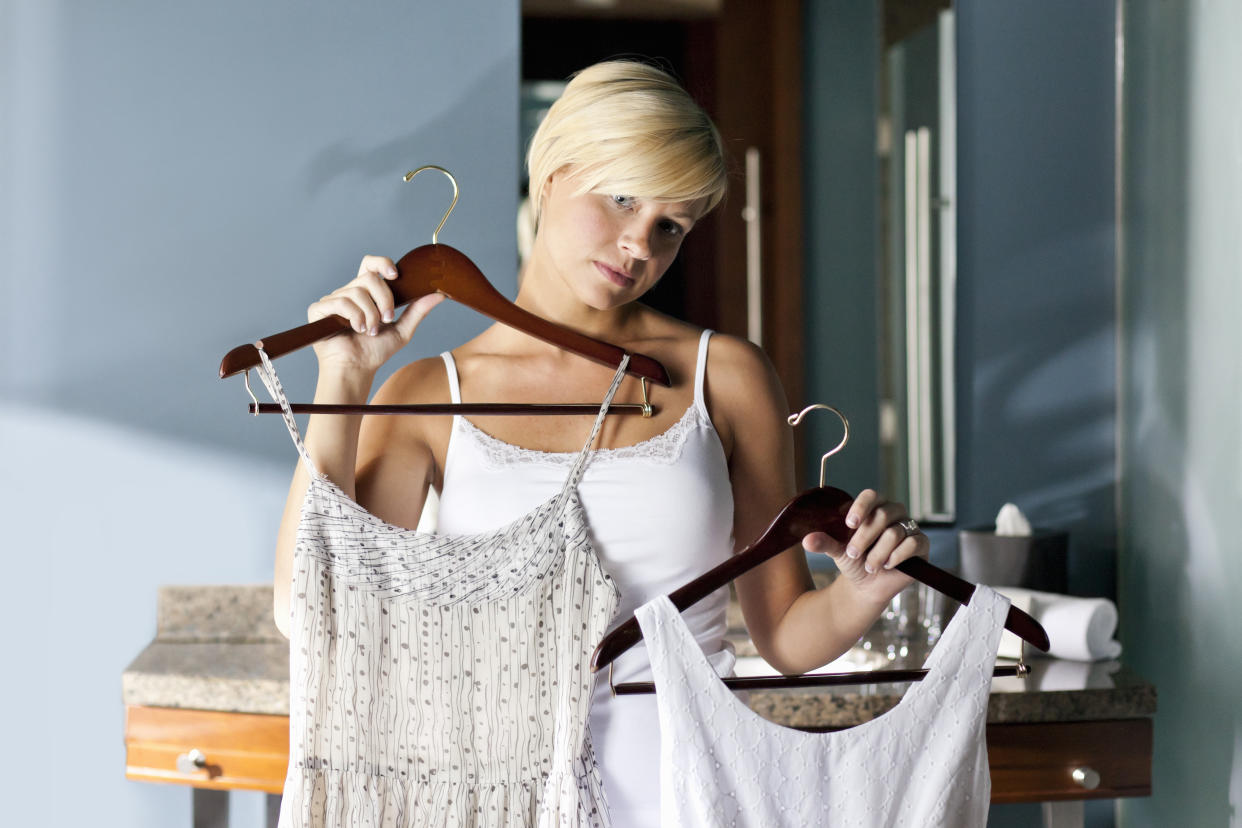You're not the only one experiencing 'wardrobe panic'

No matter how many items dangle in our closets — or how often we shop — the feeling of having nothing to wear is all too common. New data suggests this feeling will occur more than 2,800 times in our lifetimes.
The study, conducted by Trunk Club, examined the wardrobes of 2,000 men and women and found the average person experiences ‘wardrobe panic’ 36 times a year — even when they have a closet full of clothing to choose from.
Ironically, most of our closets are due for a much needed purge. Trunk Club found that 28 percent of our wardrobes have been left untouched in over a year. Of the 2,000 respondents, the average person held 53 clothing items and 15 of those no longer in rotation.
Six percent of the same people owned at least nine items with the tags still attached.
ALSO SEE: 10 of the most memorable Oscars gowns ever
Despite the overwhelming amount of clothes to choose from, most of us still begin our days stewing over what to wear. Study participants racked-up eight hours per month (nearly 100 hours per year) doing this.
Coabi Kastan, head of styling for Trunk Club said, “As you approach building your wardrobe, start with the essentials. When you build the fundamentals of your wardrobe first, you’re able to lessen the ‘wardrobe panic’ that’s so common.”
For women, staple items include:
Dark denim
Leather jacket
Sleek flats
Cashmere sweater
Silk blouse
Striped shirt
Black dress
Tailored blazer
Structured leather bag
Beige pumps
For men, start with:
Dark jeans
Crisp white shirt
Brown shoes and a brown belt
V-neck sweater
Navy blazer
ALSO SEE: Breastfeeding moms are praising Gap’s new ad campaign
“These building blocks allow you to create great and versatile outfits for any occasion and will help you feel more organized while getting dressed each morning,” Kastan added. “Simplifying your wardrobe doesn’t mean that you have to sacrifice style. By building a smarter and more thoughtful wardrobe, you’ll feel better in your clothing and spend less time worrying about what to wear.”



